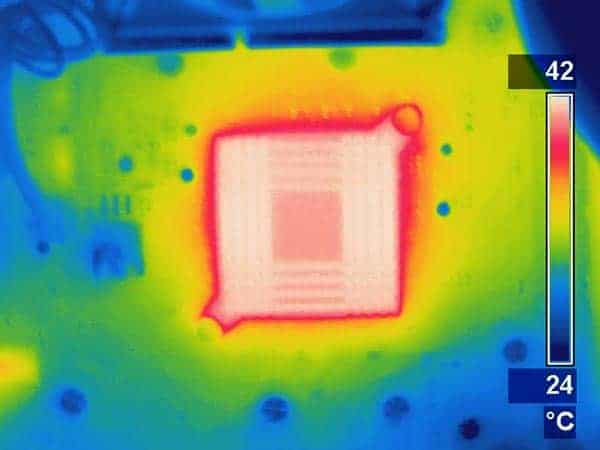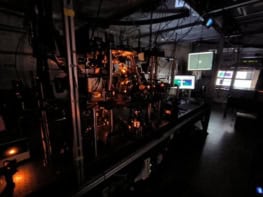
Researchers in France have shown how to isolate or “cloak” objects from sources of heat – a breakthrough that could help cool down electronic devices and thereby pave the way towards more powerful computers. They also show how the same technique could be used to concentrate heat, which might prove useful in advanced solar technologies.
Invisibility cloaks are based on the mathematics of transformation optics – bending light such that it propagates round a space, rather than through it – and were proposed by John Pendry of Imperial College in London and Ulf Leonhardt of the University of St Andrews in 2006. Now, Sebastien Guenneau of the University of Aix-Marseille and colleagues at the French national research council (CNRS) wondered whether a similar thing could be done with heat. While intuitively, it might seem unlikely that the same mathematics could be applied to thermal diffusion, given that heat does not propagate as a wave but simply diffuses; the researchers found that the transformed equation worked.
Adapting optics
To devise the specific transformations for a thermal invisibility cloak, they considered the heat from a hot object flowing from the left to the right in two dimensions, with the intensity of the heat flux through any region in space represented by the distance between “isotherms” – lines of constant temperature in that region. The more closely spaced the isotherms, the higher is the intensity of the flux. The researchers then transformed the geometry of these isotherms so that they went around rather than through a circular region that is to the right of the heat source, meaning that any object placed in this region would now be shielded from the heat flow.
The invisibility cloak that is needed to achieve this transformation would be a 2D ring built up from many concentric layers of varying diffusivity – a property that reveals how quickly a material conducts heat relative to its heat capacity per unit volume. In their calculations, the researchers modelled a cloak with an inner radius of 200 µm and an outer radius of 300 µm, and then calculated the change in heat flow around the cloak on the order of milliseconds. Because these are the kinds of distances and times relevant to the operation of microelectronic devices such as transistors, the researchers believe that this kind of cloak could be used to protect such devices from unwanted temperature gradients.
Thermal isolation
At larger scales another possible application, says Guenneau, is shielding objects from thermal-imaging cameras. Warm objects such as humans or vehicles can be seen at night using infrared imagers because their black-body spectra peak in the infrared. Putting such an object inside the kind of invisibility cloak devised by the French group would mean isolating it thermally from the outside and therefore concealing any temperature difference between it and the local environment, making the technology of particular interest to the military.
Designing a heat concentrator, on the other hand, which follows from an earlier proposal by Pendry to build concentrators for light, involves calculating the transformation that can divert the isotherms into a central region, rather than away from it. Such concentration of heat into a small space could prove useful in solar energy, says Guenneau, because it could improve the heat exchangers used for instance in concentrated solar-energy systems.
Cloak fabrication
Guenneau and co-workers are now collaborating with scientists at the University of Lille, France, to build these actual devices, in what they hope will be within a matter of months. As Guenneau explains, it ought to be far easier to build a thermal rather than an electromagnetic cloak because the broad range of diffusivities needed to bend the path of heat such that it almost completely bypasses an object can be found in nature. On the other hand, electromagnetic cloaking relies on the fabrication of completely artificial materials made up of extremely small and complex structures.
The 20 concentric layers that make up both the cloak and concentrator will have to be made from a few different materials with various diffusivities, such as metal (which, being a conductor, is highly diffusive) and polymer (which is weakly diffusive). Testing the devices will then involve placing them next to a 500-µm-long resistor and imaging the resulting distribution of heat flux using a thermal camera. If these tests all go to plan, says Guenneau, the step after that would be to make 3D devices.
Other researchers agree that the cloak and concentrator designed by the French group could in principle be built. Tomas Tyc of Masaryk University in the Czech Republic says that their works benefit from a “rigorous adaptation of the method of transformation optics to the diffusion equation”. Pendry, meanwhile, says that possible applications might include “Heat sinks that grab excess heat produced by a device, channel it away from sensitive areas and safely dump it into a heat bath.”
The research is to be published in an Optical Society of America journal.



